

The United States is often referred to as the wealthiest nation on Earth. Measured by the size of its economic output, that is the case. However, by another widely-used measure, intended to reflect the nation’s wealth relative to the size of its population, the U.S. doesn’t even fall within the top 10.
Gross national income, or GNI, represents the sum of money earned by a nation’s people and businesses within a given year. Unlike GDP, GNI also measures income earned by corporations based in the country but operating outside its borders.
Global GNI per capita — all the income earned worldwide in 2019 — was $17,591. This figure is representative of the pre-tax income the average person earned and is indicative of the average quality of life. Worldwide, GNI per capita ranges greatly, and while in some countries it is a fraction of the global figure, in others it is more than triple the global average.
Using data from the World Bank, 24/7 Wall St. reviewed the GNI per capita of the 194 nations and special regions with available data to identify the 25 richest countries. GNI per capita figures for the most recent available year are calculated using purchasing power parity and are in current international dollars. These wealthiest countries span the globe from North America to Southeast Asia, though most are concentrated in Western and Northern Europe.
Most countries on this list share several common factors, including reliable infrastructure, trust in public institutions, extensive international trade, and effective management and leveraging of natural resources. While the majority of these countries have diversified, complex economies, some — particularly those in the Middle East — are almost entirely dependent on their oil wealth. These are the 15 countries that control the world’s oil.
One of the strongest correlations with income at a national level is the overall health of the population. Residents of wealthy countries tend to have better access to housing, education, nutrition, and health care — all factors that help to improve health outcomes. In every country on this list, life expectancy at birth is at least 2.4 years greater than the 72.6-year global average. Here is a list of the countries where people live the longest.
Click here to see the 25 richest countries in the world
Click here to see our methodology
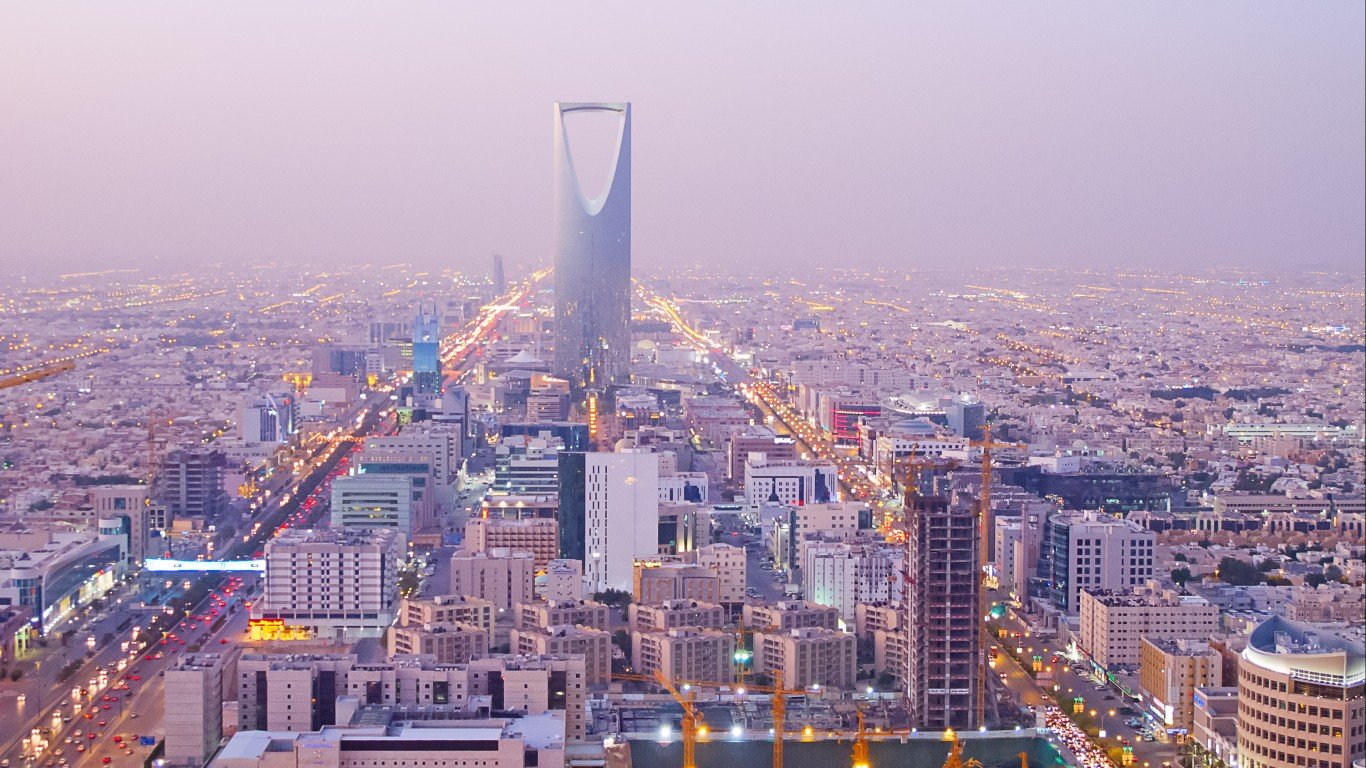
25. Saudi Arabia
> 2019 GNI per capita: $49,400
> 2019 GDP: $793.0 billion (18th out of 206 countries)
> Population (2019): 34.3 million
> Life expectancy at birth in 2018: 75.0 years
Saudi Arabia’s gross national income — the total income earned by residents and businesses — was $1.7 trillion in 2019. With a GNI per capita of $49,400, Saudi Arabia ranks as the 25th wealthiest country in the world. The oil-rich country is home to over 17% of the world’s crude reserves and generates much of its wealth through petroleum exports. Petroleum accounted for nearly three-quarters of the country’s $263 billion in 2018 exports.
Saudi Arabia has the world’s 18th largest economy, with a GDP of $793 billion in 2019.
[in-text-ad]

24. France
> 2019 GNI per capita: $50,390
> 2019 GDP: $2.7 trillion (7th out of 206 countries)
> Population (2019): 67.1 million
> Life expectancy at birth in 2018: 82.7 years
Only half a dozen countries have a larger economy than France. The Western European nation had a GDP of $2.7 trillion in 2019. Counting all income earned by French citizens and businesses, even outside of its borders, and adjusting it to the population, France is the 24th wealthiest country in the world.
Like many countries on this list, France has a complex and diverse economy. It exports manufactured goods, including aircraft, automobiles, and pharmaceuticals, to countries across all over the world, including China, the United States, and other European countries.

23. Canada
> 2019 GNI per capita: $50,810
> 2019 GDP: $1.7 trillion (10th out of 206 countries)
> Population (2019): 37.6 million
> Life expectancy at birth in 2017: 81.9 years
Canada is one of 24 countries in the world where the gross national income per capita is more than $50,000. Rich in natural resources, Canada’s top exports include gold, aluminium, and wood. Canada also controls about 10% of proved oil reserves worldwide. The service sector is also a dominant force in the Canadian economy.
As is often the case in the nations on this list, Canada’s population is relatively healthy. Life expectancy at birth is about 82 years, longer than the vast majority of other countries and well above the 72.6 year global average.
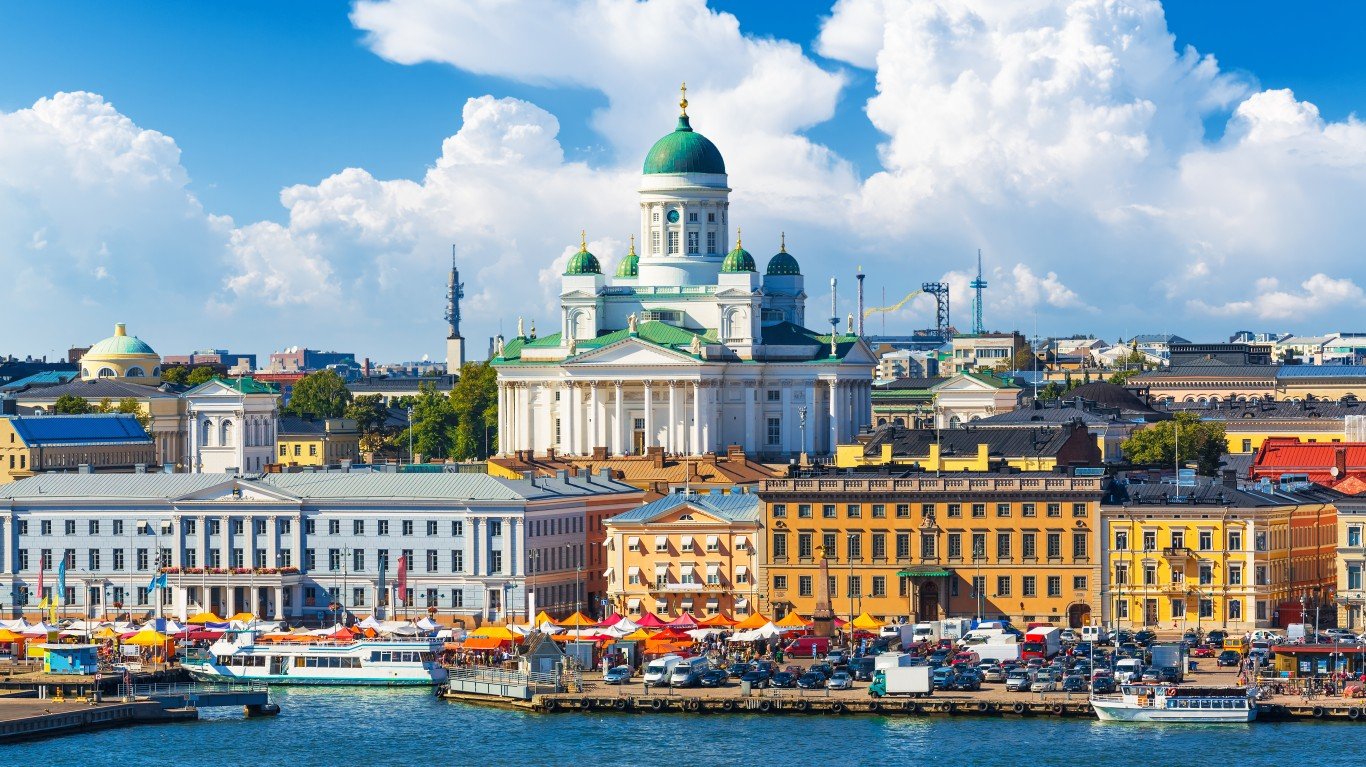
22. Finland
> 2019 GNI per capita: $51,210
> 2019 GDP: $268.8 billion (45th out of 206 countries)
> Population (2019): 5.5 million
> Life expectancy at birth in 2018: 81.7 years
Finland endured heavy influence from the Soviet Union since the end of World War II. However, following the collapse of the USSR in 1991 and a subsequent spike in unemployment, Finland underwent a period of economic growth and recovery. Today, Finland’s economy is driven in part by telecommunications product manufacturing, textiles, and food and beverage production. Foreign trade also significantly contributes to Finland’s wealth. The country exported $76.8 billion in goods in 2018 alone.
Government institutions in Finland are relatively free of corruption, and income inequality is not as pronounced in Finland as it is in many other wealthy countries.
[in-text-ad-2]
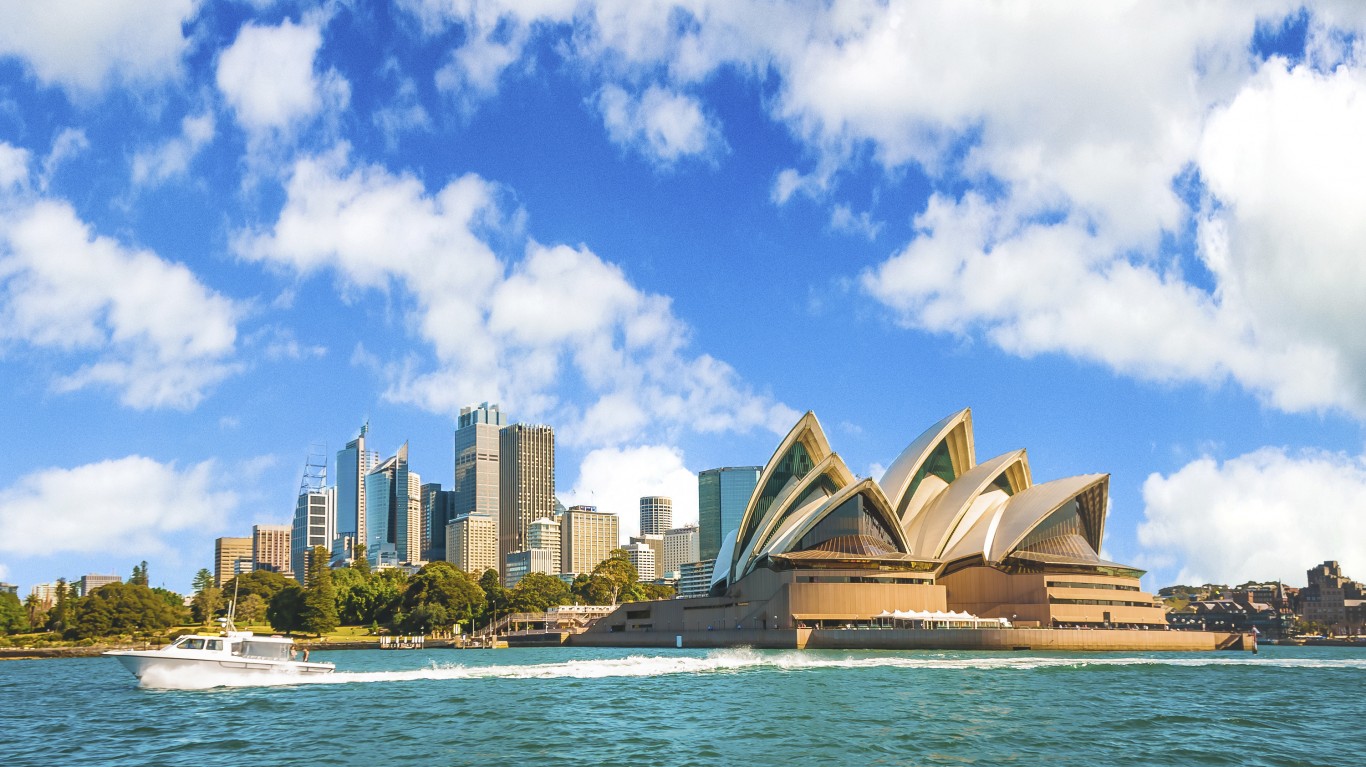
21. Australia
> 2019 GNI per capita: $51,560
> 2019 GDP: $1.4 trillion (14th out of 206 countries)
> Population (2019): 25.4 million
> Life expectancy at birth in 2018: 82.7 years
With a GNI per capita of $51,560, Australia is the only nation in the Southern Hemisphere to rank among the 25 wealthiest countries in the world. It also has one of the largest economies in the world with GDP of $1.4 trillion in 2019 — higher than in all but 13 other countries worldwide. The country has strong manufacturing and services sectors and exports billions of dollars worth of minerals, including iron ore, gold, and zinc ore, as well as coal.
Like many other wealthy countries, Australia is home to a well-educated population. According to World Bank estimates, 31.7% of the country’s adult population holds the equivalent of a bachelor’s degree or higher.
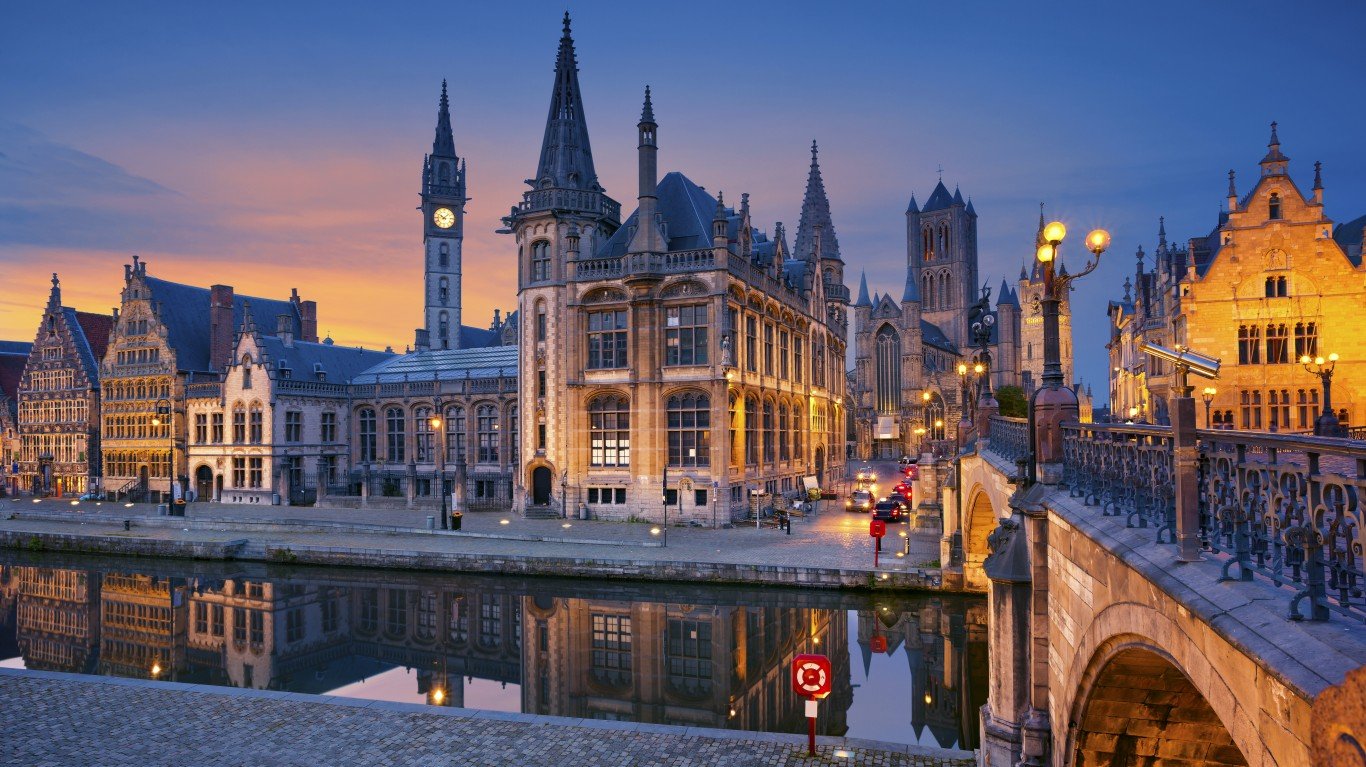
20. Belgium
> 2019 GNI per capita: $54,730
> 2019 GDP: $529.6 billion (24th out of 206 countries)
> Population (2019): 11.5 million
> Life expectancy at birth in 2018: 81.6 years
Belgium — which shares a border with four other countries on this list — is one of many Western European nations to rank among the wealthiest countries in the world. The country’s economy, which is also one of the largest in the world, is heavily dependent on trade, particularly with its European neighbours. The country’s top exports include pharmaceutical products, chemicals, plastics, and nuclear reactors.
Income inequality is far less pronounced in Belgium than it is in many other wealthy countries.
[in-text-ad]
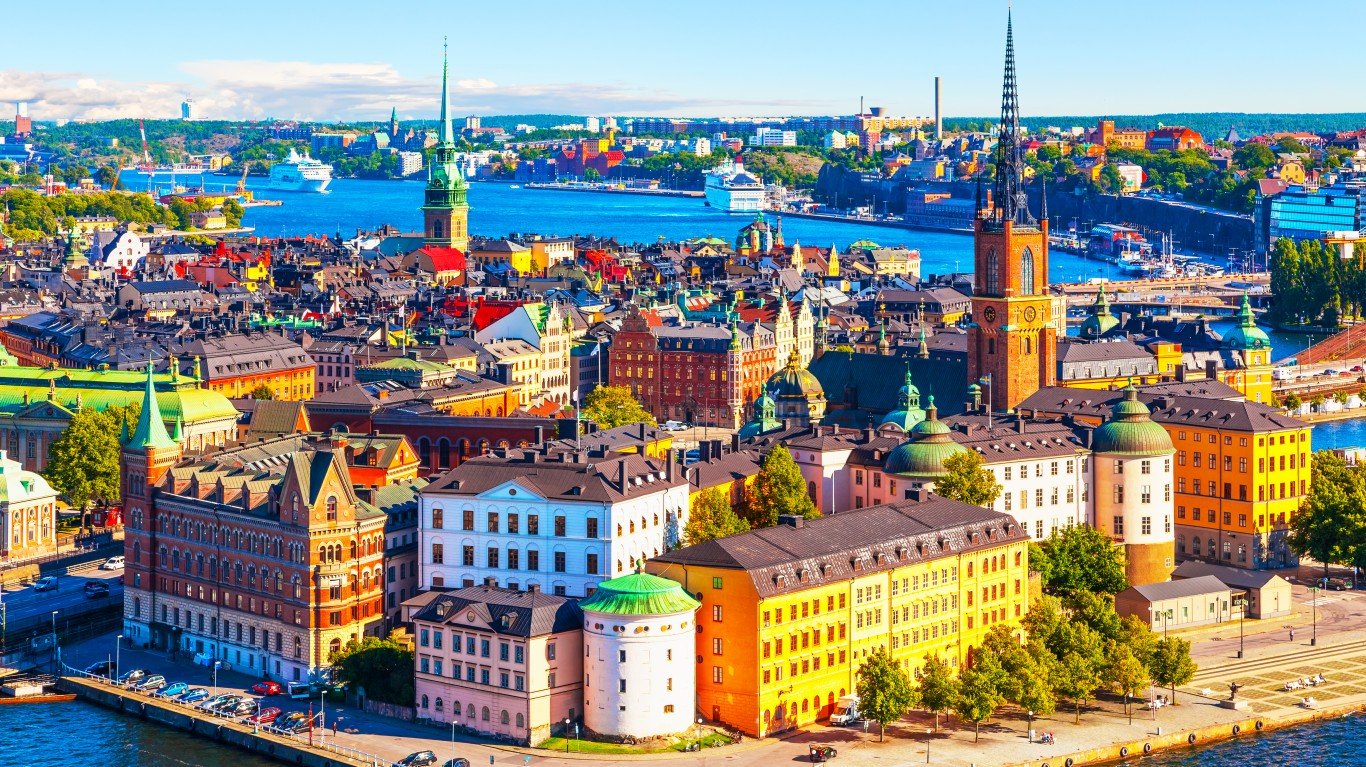
19. Sweden
> 2019 GNI per capita: $57,300
> 2019 GDP: $530.8 billion (23rd out of 206 countries)
> Population (2019): 10.3 million
> Life expectancy at birth in 2018: 82.6 years
All three Scandinavian countries rank among the 25 wealthiest countries in the world, and Sweden, the most populous of the three, ranks last, with a GNI per capita of $57,300. Sweden’s economy is based on a public-private partnership model that offers a strong social safety net and residents enjoy a high standard of living.
Like most of the wealthiest countries in the world, Sweden has a high life expectancy at birth of 82.6 years, about four years higher than that of the United States.
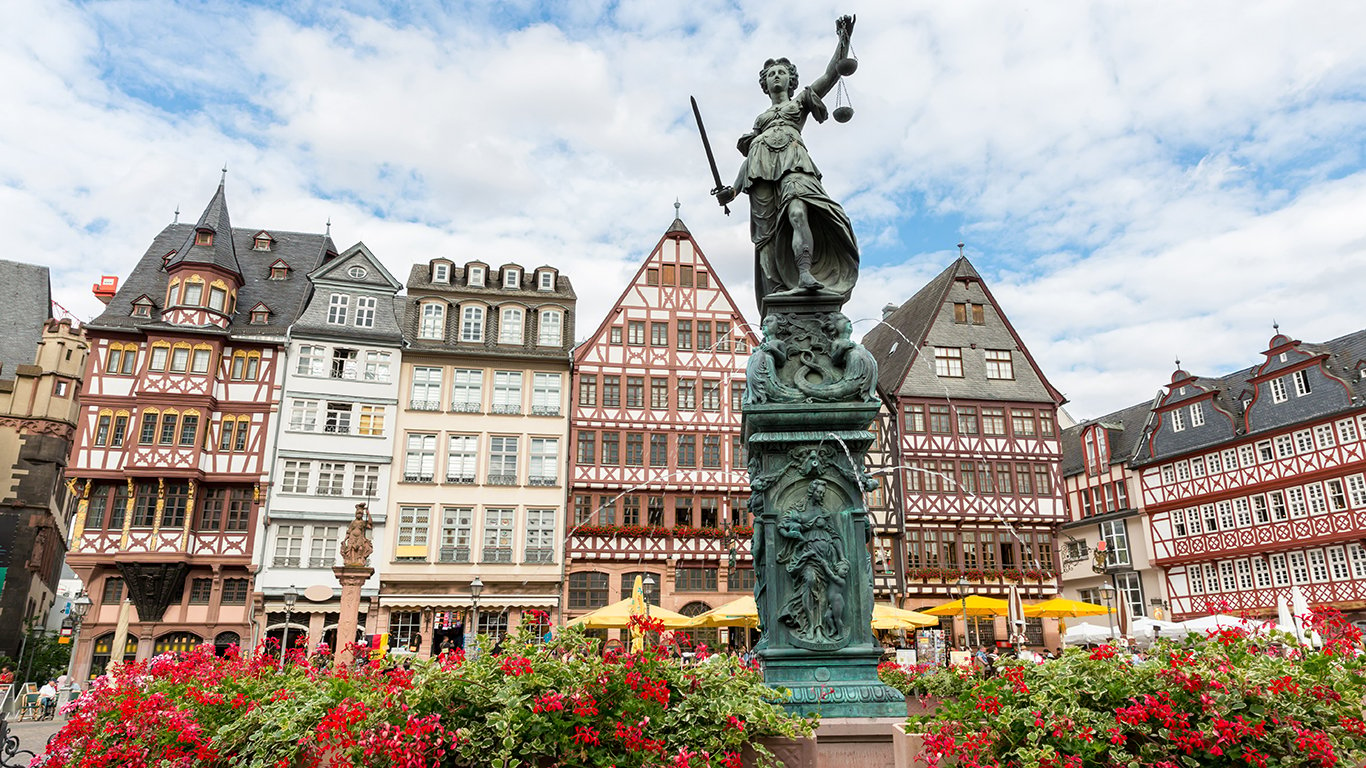
18. Germany
> 2019 GNI per capita: $57,690
> 2019 GDP: $3.8 trillion (4th out of 206 countries)
> Population (2019): 83.1 million
> Life expectancy at birth in 2018: 80.9 years
Germany’s $3.8 trillion economy is the largest in Europe and fourth largest in the world. The country is one of only 19 worldwide with a GNI per capita of over $55,000. Germany’s economy is heavily regulated by the government to ensure fairness between management and labor and dealings between companies.
Germany is notable for its auto industry and is home to some of the largest car companies in the world, including Volkswagen, Daimler AG, BMW, and Audi. Germany exported $156 billion worth of automobiles in 2018 alone. Germany’s largest trading partners include China, the United States, and France.
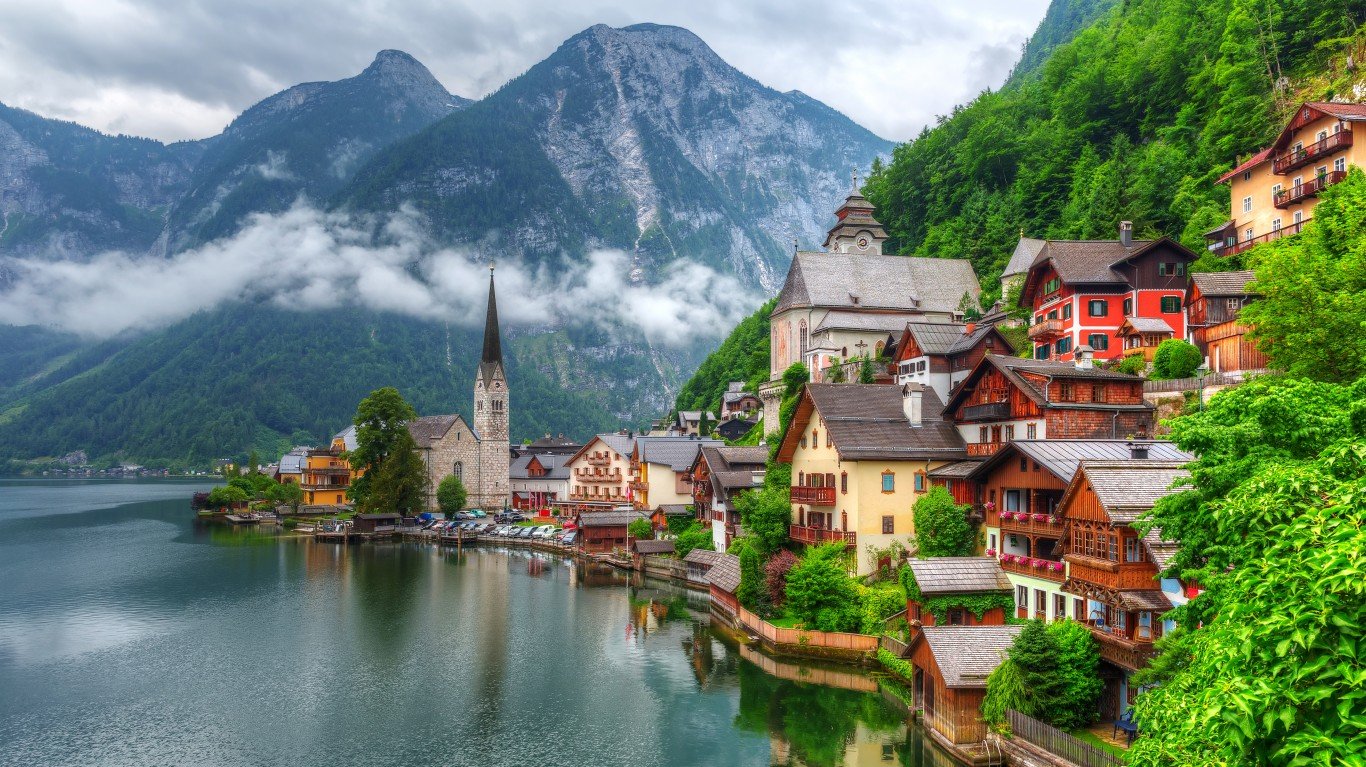
17. Austria
> 2019 GNI per capita: $59,060
> 2019 GDP: $446.3 billion (28th out of 206 countries)
> Population (2019): 8.9 million
> Life expectancy at birth in 2018: 81.7 years
Austria has a gross national income of just over $59,000 per capita among its 8.9 million residents. The Central European nation describes its economic system as a “free market economy with a strong social focus.”
Austria’s economy is dependent on a variety of exports, sent mainly within Europe. The country exported $49 billion worth of machinery and parts and over $22 billion worth of transportation equipment like cars, trucks, tractors and their parts in 2018. Austria also has a large service sector and significant mineral resources.
[in-text-ad-2]
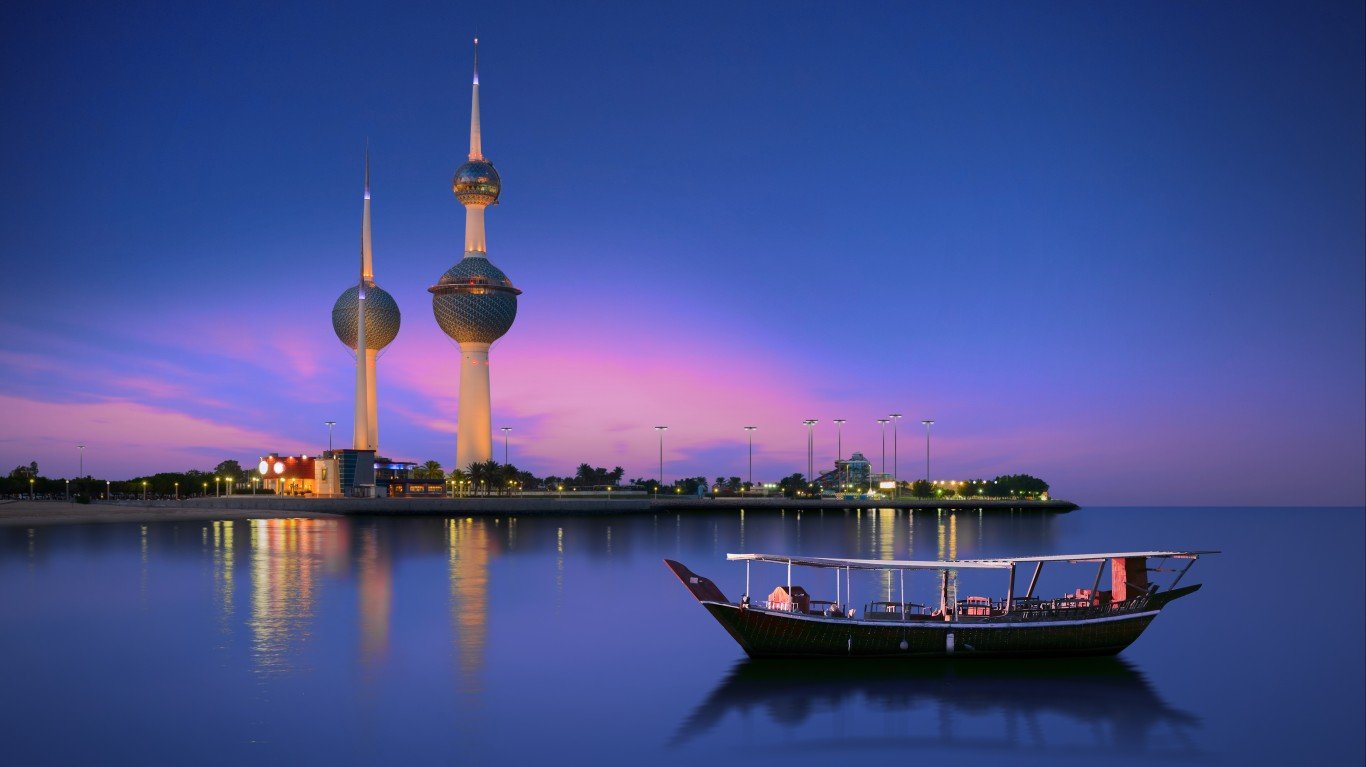
16. Kuwait
> 2018 GNI per capita: $59,720
> 2019 GDP: $134.8 billion (59th out of 206 countries)
> Population (2019): 4.2 million
> Life expectancy at birth in 2018: 75.4 years
Kuwait is one of only a few Middle Eastern countries to rank on this list. Unlike most other wealthy countries, Kuwait’s economy is not especially diverse and is heavily dependent on oil. The small country of 4.2 million people is home to about 6% of the world’s proved oil reserves. Petroleum accounts for the vast majority of exports and 90% of government income.
Governments are less likely to be perceived as corrupt in wealthy countries. However, Kuwait residents are far more likely to perceive their own institutions as corrupt than the citizens of any other country on this list.
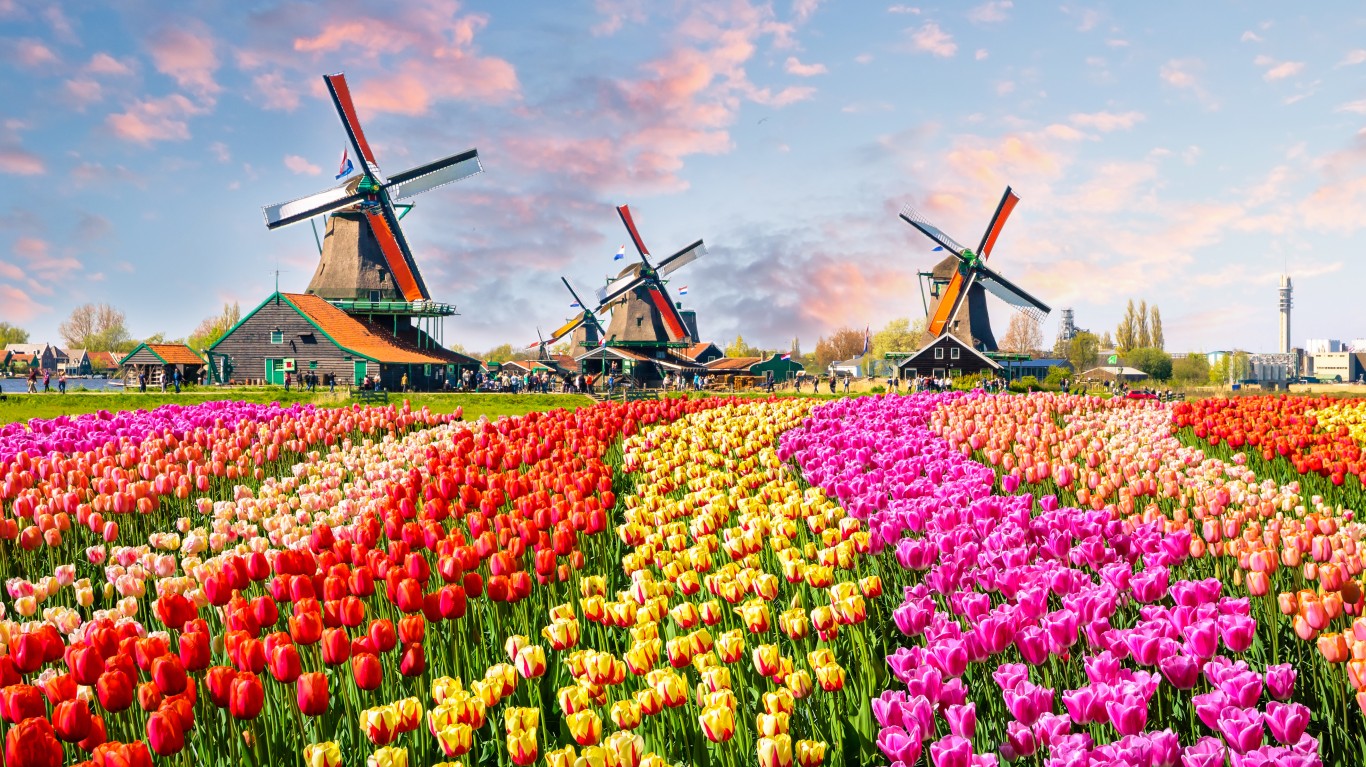
15. Netherlands
> 2019 GNI per capita: $59,890
> 2019 GDP: $909.1 billion (17th out of 206 countries)
> Population (2019): 17.3 million
> Life expectancy at birth in 2018: 81.8 years
The Netherlands has a highly advanced and mechanized agriculture sector and is the second largest agricultural exporter in the world. Its diverse economy is also supported by strong food processing, chemicals, petroleum refining, and electrical machinery sectors.
The country has a GNI per capita of nearly $60,000, ranking 15h highest in the world. The European country also has low unemployment and relatively equal distribution of wealth.
[in-text-ad]

14. Iceland
> 2019 GNI per capita: $61,170
> 2019 GDP: $24.2 billion (109th out of 206 countries)
> Population (2019): 361,313
> Life expectancy at birth in 2014: 82.9 years
Iceland, a country with a population about the size of Tampa, Florida, is one of only 14 nations with a GNI per capita over $60,000. With a strong welfare system, the Nordic island nation also has a relatively even distribution of income. Tourism is a major economic engine, along with fishing, and aluminium smelting.
As is the case with many of the wealthiest countries in the world, Iceland is also one of the healthiest. Life expectancy at birth is about 83 years, more than a decade longer than the global average.
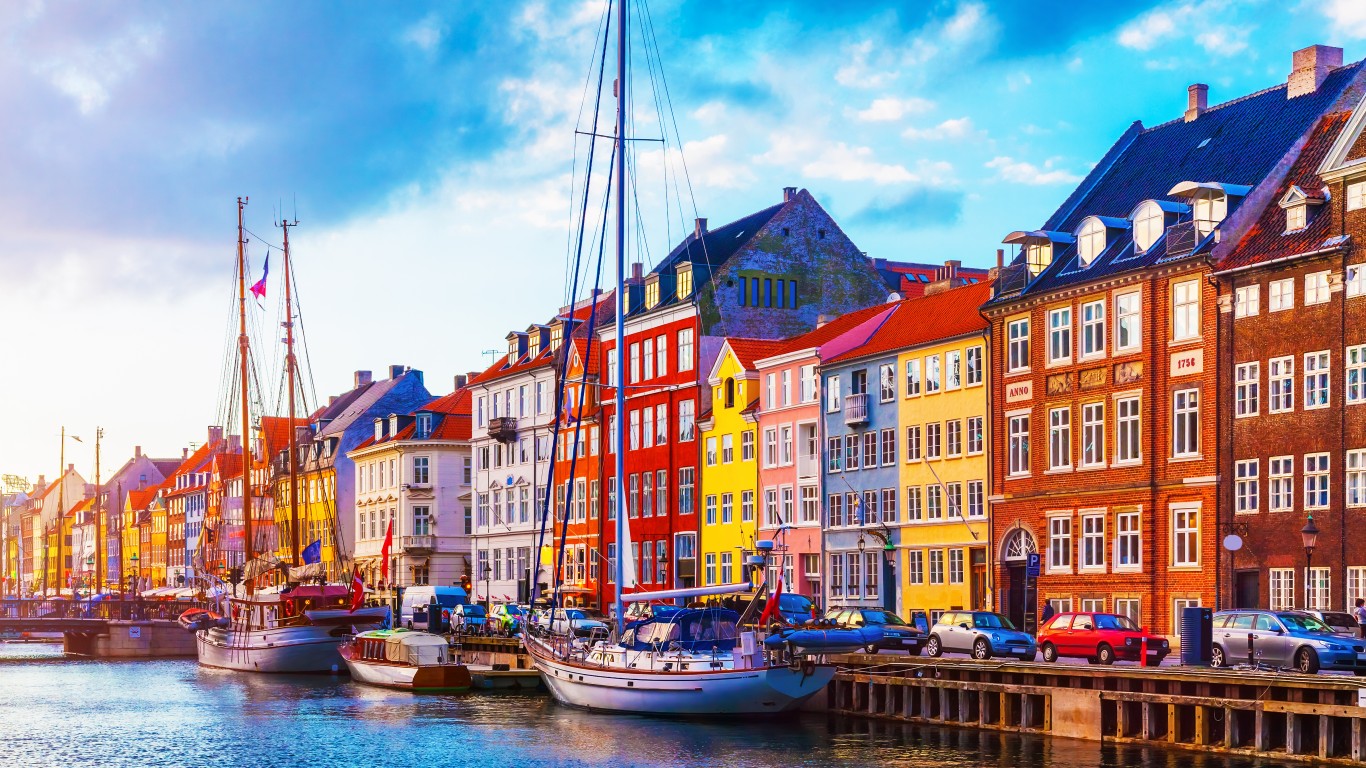
13. Denmark
> 2019 GNI per capita: $61,410
> 2019 GDP: $348.1 billion (39th out of 206 countries)
> Population (2019): 5.8 million
> Life expectancy at birth in 2018: 81.0 years
Corruption can discourage investment, reduce efficiencies, unfairly alter market forces, and generally reduce prosperity in any country. According to Transparency International, Denmark ranks as the least corrupt country in the world. It also has more equal distribution of wealth than most countries on this list.
The country has strong pharmaceutical, shipping, renewable energy, and high tech farming sectors. Trade is also a critical economic pillar, generating $101 billion in revenue in 2018.

12. Hong Kong SAR, China
> 2019 GNI per capita: $65,600
> 2019 GDP: $366.0 billion (36th out of 206 countries)
> Population (2019): 7.5 million
> Life expectancy at birth in 2018: 84.9 years
Hong Kong, a special administrative region of China, is one of just a dozen places on this list with a GNI per capita over $65,000. Like many other wealthy nations, Hong Kong residents tend to be relatively healthy. At 84.9 years, the life expectancy at birth in Hong Kong is the second highest of any country.
Hong Kong’s economy is more dependent on trade than almost any other economy. In 2019, trade in the region was equal to approximately three and a half times Hong Kong’s $366 billion GDP.
[in-text-ad-2]

11. United States
> 2019 GNI per capita: $65,880
> 2019 GDP: $21.4 trillion (1st out of 206 countries)
> Population (2019): 328.2 million
> Life expectancy at birth in 2016: 78.5 years
The $21.4 trillion U.S. economy is the largest of any country in the world. And with a GNI per capita of $65,880, the U.S. is the 11th wealthiest country in the world. The U.S. economy is highly developed and complex and has been driven in part by technology in recent years. It also depends heavily on services, and the health care, military equipment, and aerospace industries.
The United States faces some challenges that many other countries on this list do not. For example, income inequality is worse in the U.S. than in most other wealthy nations, and at 78.5 years, life expectancy at birth in the U.S. is lower than in all but four other countries on this list.

10. Brunei Darussalam
> 2019 GNI per capita: $66,410
> 2019 GDP: $13.5 billion (134th out of 206 countries)
> Population (2019): 433,285
> Life expectancy at birth in 2018: 75.7 years
Brunei Darussalam is a small country in southeast Asia bordered by Malaysia and the South China Sea. Though the country has a relatively small economy of just $13.5 billion, it also has a small population of less than half a million people.
The country is oil rich, and petroleum gas and crude petroleum accounted for over 90% of its $6.4 billion in exports in 2018. With a well-educated population and high quality infrastructure, the country draws in considerable foreign investment. The country is in the process of diversifying its economy, expanding into IT manufacturing. Due in part to its wealth, residents do not pay income tax.
[in-text-ad]

9. Ireland
> 2019 GNI per capita: $68,050
> 2019 GDP: $388.7 billion (33rd out of 206 countries)
> Population (2019): 4.9 million
> Life expectancy at birth in 2018: 82.3 years
Ireland is the ninth wealthiest country in the world and the fourth wealthiest in Europe, with a GNI per capita just over $65,000. Ireland is one of the most trade dependent countries in the world. In 2018, the country exported $210 billion worth of services, the most of any country.
Ireland Ireland’s chief export, of the $175 billion in goods it sold in 2018, is chemical products, which include vaccines, cultures, and packaged medicines. More than a quarter of Ireland’s exports go to the U.S., and most of the rest go to other European countries.

8. Norway
> 2019 GNI per capita: $69,610
> 2019 GDP: $403.3 billion (31st out of 206 countries)
> Population (2019): 5.3 million
> Life expectancy at birth in 2018: 82.8 years
With a GNI per capita of nearly $70,000, Norway is the wealthiest Scandinavian country and the eighth wealthiest in the world. Its natural resources, which include fish, forests, minerals, and oil, are major drivers of the national economy. Norway is one of the world’s top exporters of oil and one of the top exporters of seafood.
Like other wealthy European countries, Norway provides a strong social safety net to citizens and has relatively little corruption and wealth inequality. Life expectancy at birth in the country is nearly 83 years, about a decade longer than the global average.

7. United Arab Emirates
> 2019 GNI per capita: $70,240
> 2019 GDP: $421.1 billion (30th out of 206 countries)
> Population (2019): 9.8 million
> Life expectancy at birth in 2018: 77.8 years
Like other Middle Eastern countries on this list, the United Arab Emirates derives its wealth largely from its natural resources — namely, oil. The UAE controls nearly 6% of the world’s proved oil reserves, and crude and refined petroleum exports generated nearly 40% of the country’s $242 billion in exports in 2018. The country is in the process of diversifying its economy, bolstering its trade and tourism sectors and focusing on improving education of its population.
The UAE struggles more than most countries on this list with income inequality and public sector corruption. It is also one of only five countries on this list where life expectancy at birth is less than 80 years.
[in-text-ad-2]
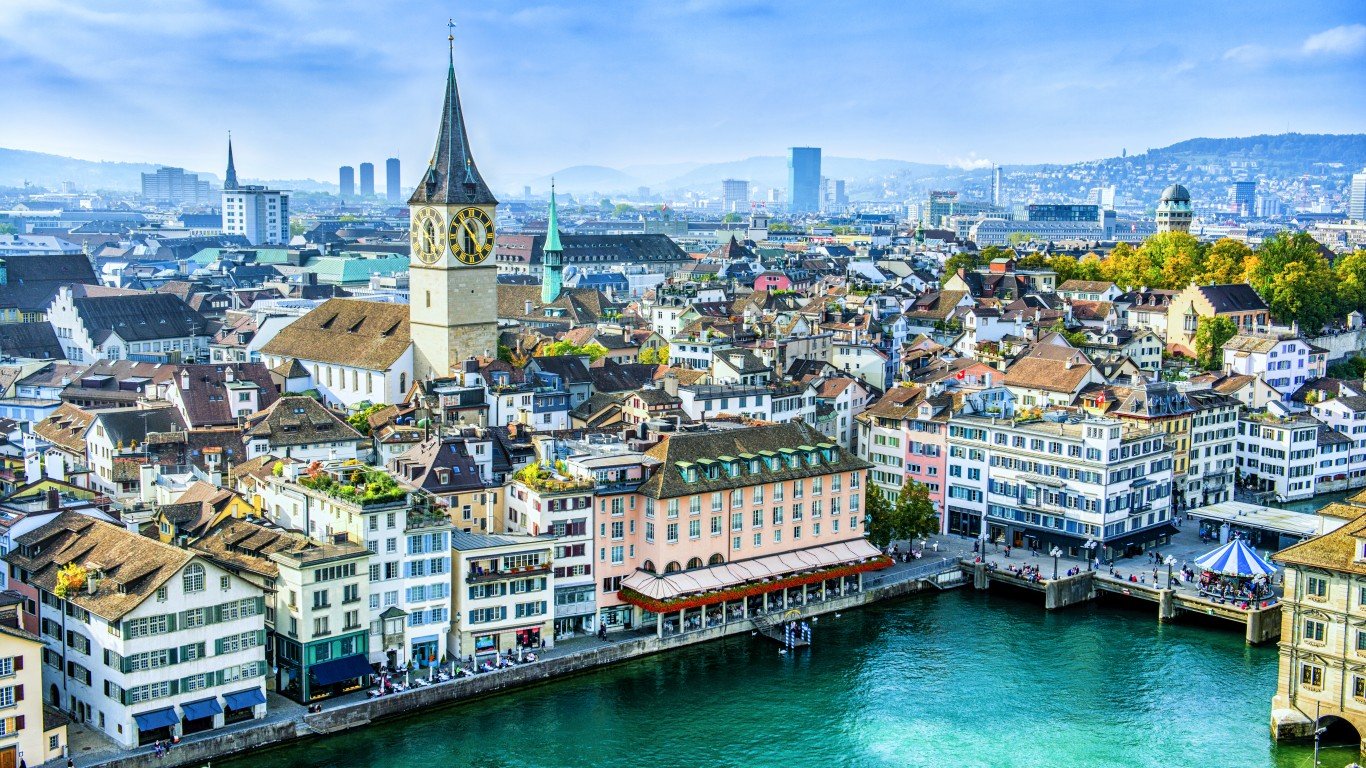
6. Switzerland
> 2019 GNI per capita: $72,390
> 2019 GDP: $703.1 billion (20th out of 206 countries)
> Population (2019): 8.6 million
> Life expectancy at birth in 2018: 83.8 years
Thanks in part to its competitive business environment and strong free trade climate, Switzerland is one of the wealthiest nations in the world. Its GNI per capita of $72,390 is the sixth highest in the world. The country is one of just 20 in the world with GDP that exceeded $700 billion in 2019.
Switzerland is the world’s leading exporter of gold — exporting $63.8 billion worth in 2018. Gold exports accounted for over one-fifth of its total exports that year. Switzerland is also one of the best educated countries in the world, with 36.9% of adults 25 and older holding at least a bachelor’s degree, or the equivalent.
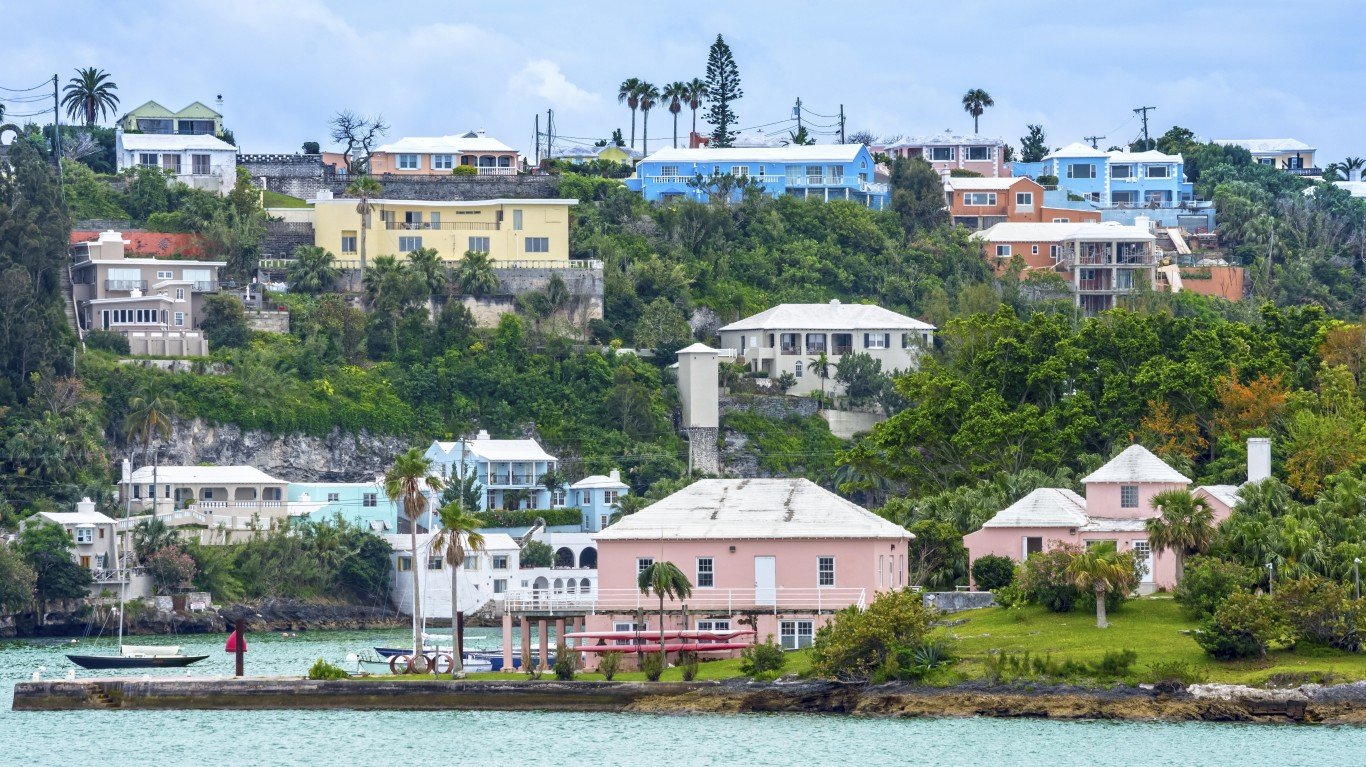
5. Bermuda
> 2013 GNI per capita: $75,620
> 2013 GDP: $5.6 billion (157th out of 206 countries)
> Population (2019): 63,918
> Life expectancy at birth in 2018: 81.7 years
Home to fewer than 64,000 people, Bermuda is the smallest country on this list. With a GDP of only $5.6 billion, it also has the smallest economy. Still, at $75,620, GNI per capita in Bermuda is fifth highest in the world.
Bermuda’s economy is heavily dependent on insurance and financial services for international business. Tourism, driven by visitors from the United States, is also an economic pillar.
[in-text-ad]

4. Luxembourg
> 2019 GNI per capita: $77,570
> 2019 GDP: $71.1 billion (73rd out of 206 countries)
> Population (2019): 619,896
> Life expectancy at birth in 2018: 82.3 years
Luxembourg is one of the smallest countries in the world, both in terms of landmass and population, with just over 600,000 citizens. With a GDP of $71.1 billion, Luxembourg’s GNI per capita is one of the highest in the world, at $77,570.
Surrounded by Germany, France, and Belgium — all countries that rank on this list — Luxembourg is dependent on trade with its European neighbours. It also has a strong financial sector.

3. Singapore
> 2019 GNI per capita: $92,020
> 2019 GDP: $372.1 billion (35th out of 206 countries)
> Population (2019): 5.7 million
> Life expectancy at birth in 2018: 83.1 years
Formerly a British trading post, Singapore, a city state in southeast Asia is now a thriving economic powerhouse. Singapore’s economy is dependent on its financial and trade sectors. Its chief exports include electronics, petroleum products, chemicals, medical devices, and pharmaceuticals.
The country is largely unburdened by public sector corruption and has a well-educated population and low unemployment. It is one of only three countries in the world with a GNI per capita over $90,000.
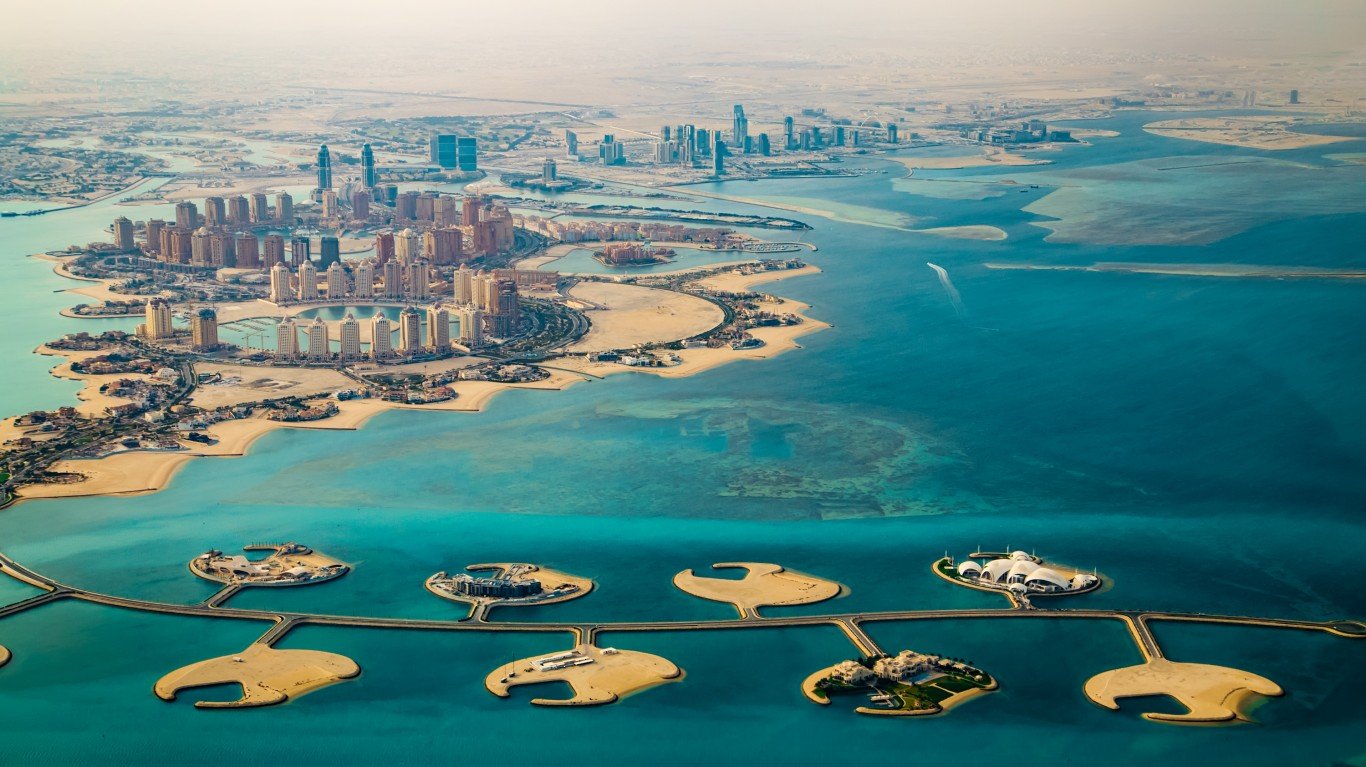
2. Qatar
> 2019 GNI per capita: $94,170
> 2019 GDP: $183.5 billion (54th out of 206 countries)
> Population (2019): 2.8 million
> Life expectancy at birth in 2018: 80.1 years
Qatar has the second highest GNI per capita in the world at $94,170 — more than five times the worldwide GNI per capita. Like many other Middle Eastern countries to rank among the richest in the world, Qatar’s wealth is largely derived from significant oil and gas production. Qatar exported $59 billion-worth of gas and petroleum in 2018, mostly to Asian countries like South Korea, India, and China.
Qatar is one of the fastest growing countries in the world, with a population growth rate of 10.4% from 2015 to 2019 — more than double the worldwide rate.
[in-text-ad-2]
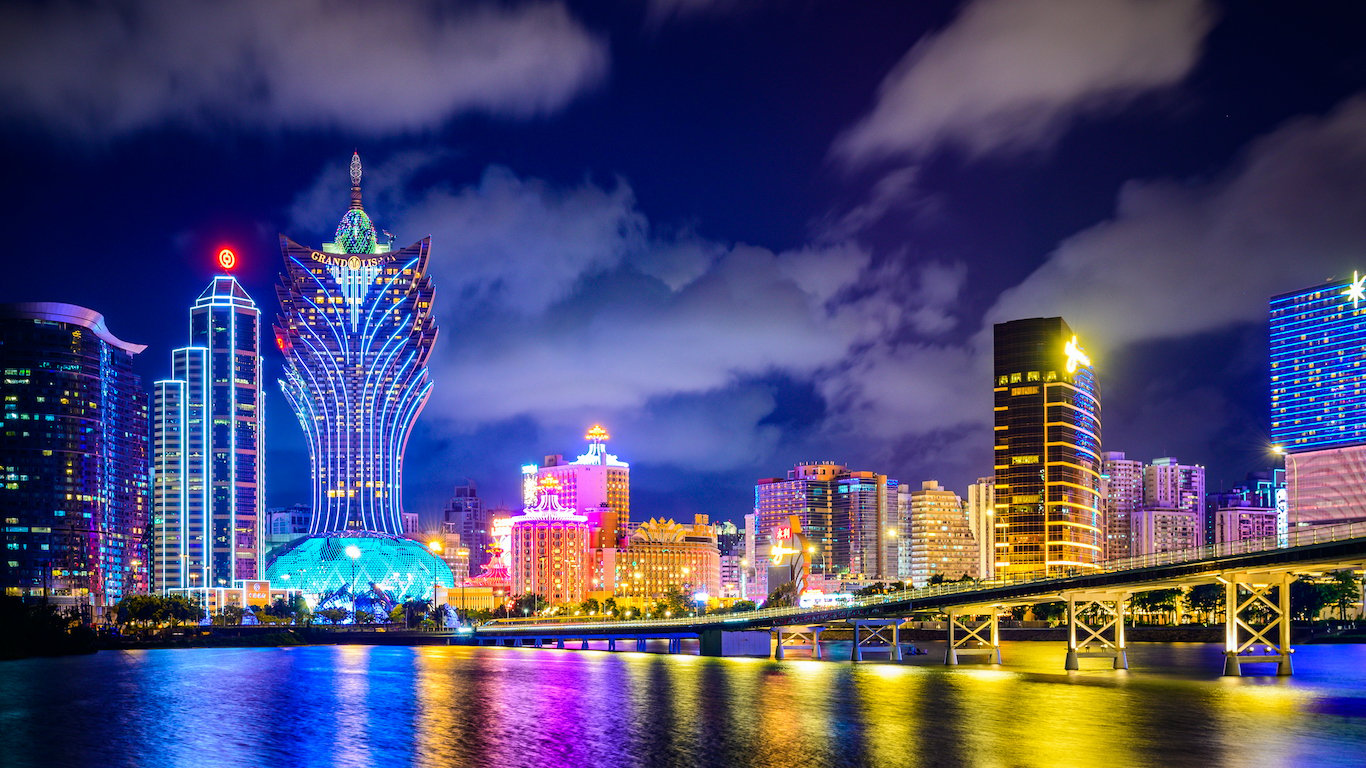
1. Macao SAR, China
> 2018 GNI per capita: $123,290
> 2019 GDP: $53.9 billion (85th out of 206 countries)
> Population (2019): 64,445
> Life expectancy at birth in 2018: 84.1 years
Macao is a special administrative region of China. Though it is officially a part of China, it has broad authority over its own government and economy. Home to fewer than 65,000 people, Macao is one of the smallest countries on this list. Still, with a $53.9 billion economy, Macao’s GNI per capita of $123,290 is higher than that of every other country in the world.
Macao’s economy is almost entirely dependent on its service sector. Since foreign casinos were allowed to operate there in 2003, tourism and gaming have come to account for more than 90% of the economy.
Methodology:
To determine the richest countries in the world, 24/7 Wall St. reviewed data on GNI per capita for 194 countries and special regions with available data from the World Bank. The World Bank estimates GNI per capita using the purchasing power parity method, and figures are in current international dollars. All data on GNI per capita is based on the most recent available year for a given country.
Additional data on GDP in current U.S. dollars, population, and life expectancy at birth also came from the World Bank. All data are for the most recent year available for every country.
We also considered data on levels of public sector corruption from the nonprofit, international watchdog and anti-corruption group, Transparency International.
Sponsored: Find a Qualified Financial Advisor
Finding a qualified financial advisor doesn’t have to be hard. SmartAsset’s free tool matches you with up to 3 fiduciary financial advisors in your area in 5 minutes. Each advisor has been vetted by SmartAsset and is held to a fiduciary standard to act in your best interests. If you’re ready to be matched with local advisors that can help you achieve your financial goals, get started now.
Thank you for reading! Have some feedback for us?
Contact the 24/7 Wall St. editorial team.
 24/7 Wall St.
24/7 Wall St. 24/7 Wall St.
24/7 Wall St.


